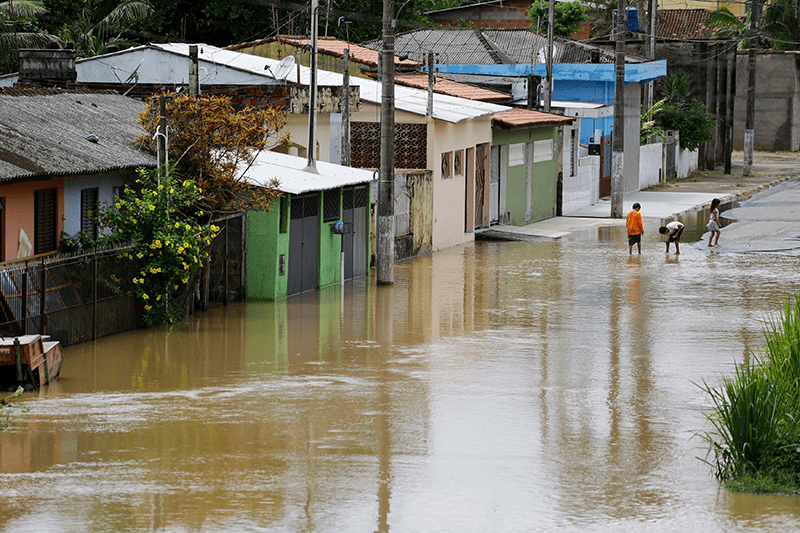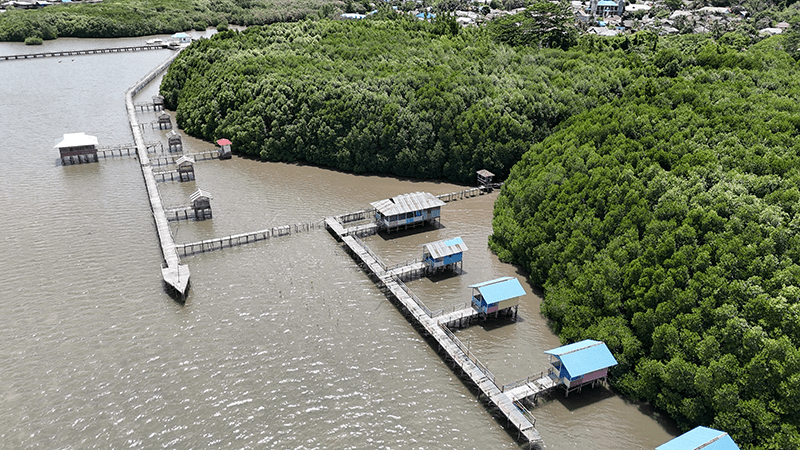Read the latest thoughts and analysis on breakthrough solutions driving impact for a sustainable future
5 innovations helping the world adapt to climate change
Significant resources have been invested in reducing greenhouse gas emissions, as governments worldwide push for cleaner energy, the protection of carbon-absorbing forests and the use of cutting-edge technologies like carbon capture.
While these efforts are crucial in mitigating emissions, the scientific evidence is stark and the message clear: the impacts of climate change are now unavoidable. Record-shattering heatwaves, devastating floods and raging wildfires have become the new normal, threatening lives, infrastructure and economies globally, while increasing in intensity, frequency and duration.
Adaptation: a necessity, not a defeat
Efforts to curtail emissions remain imperative to slow the pace of global warming, but the harsh reality is that climate change is here – and it’s hitting the vulnerable hardest. Developing nations and marginalized communities, particularly in the Global South, are stranded on this battle’s frontline, often lacking the resources and infrastructure needed to cope. For them, adaptation is an absolute necessity.
Adapting to climate change is not admitting defeat; it is acknowledging this new normal and taking immediate action. Global collaboration and funding are required to build resilience to our changing climate where it is needed most. By balancing mitigation and adaptation, we can empower communities and vital ecosystems to cope with the present, while charting a better path into the future.
The good news is that a wave of innovation is providing fresh impetus to adaptation efforts.

Five innovations to counter climate change now
Artificial intelligence
AI, hailed as one of the most important technological advances of our time, is making its presence felt across sectors, and its transformational potential is already being applied to the complex challenges of the climate crisis.
AI-driven models analyze reams of real-time data, identifying patterns that evade the human eye, translating rich information into better forecasting of severe weather. This allows for early evacuation and targeted aid, evidenced by the UN-backed IKI Project in Africa, which is using AI technology to predict weather patterns so communities and authorities across Burundi, Chad and Sudan can both prepare and adapt.
It is also helping to identify gaps in vulnerable supply chains and optimizing water management in both drought and flood-prone areas, including smart-sewer systems that avert flooding during heavy rainfall.
AI is also revolutionizing productivity, cutting time-consuming tasks like mapping the size and location of icebergs in a fraction of a second as scientists seek more precise monitoring of sea levels in polar regions. It is being used to chart detailed maps of ocean litter to bolster efficient, targeted clean-up operations.
Drones
Unmanned aerial vehicles (UAVs) have emerged as a game-changer in disaster response and risk assessment. By providing quick, high-resolution imagery of flood-affected regions, for example, emergency services and authorities can map out the extent of flood damage, assess short-term infrastructure problems, and identify longer-term vulnerabilities.
In the aftermath of a disaster, their flexibility allows for improved search-and-rescue as they can be deployed rapidly, equipped with cameras to spot stranded communities; and, in some instances, they have allowed rescue services to digitally map out optimized “escape” routes.
They have proved an invaluable tool in environmental monitoring, particularly in vulnerable low-lying coastal areas. In Portugal – one of Europe’s hardest-hit countries by forest fires – drones are used to assist with wildfire surveillance in high-risk, hard-to-reach areas, as well as directly combatting potential blazes by dousing them with water before they escalate beyond control.
Virtual / augmented reality
Through the digital enhancement of our surroundings, we have a powerful ally in planning and preparation. For example, VR simulations can totally immerse users in projected disaster scenarios. In a practical sense, this enables safe visualization of immediate risks and subsequent solutions. But they also take the role of a powerful and visceral educational tool about the real-world impact of climate change on vulnerable communities.
Initiatives like the World Economic Forum’s Climate Tipping Points Hub are also using these immersive environments to display the cascading nature of climate change through disappearing arctic sea ice and rising sea levels.

Nature-based solutions
Innovation need not be limited to technology, and nature-based solutions have been around for millennia – indeed, Indigenous peoples and local communities have harnessed the power of Earth’s ecosystems for generations.
But in recent years, the term has gained more prominence and awareness as innovative initiatives have looked to effectively leverage the power of nature to address our world’s modern-day challenges.
Take the World Wildlife Fund’s Mangroves for Community and Climate project, for example. Mangroves feature complex root systems and act as natural buffers against storm surges, flooding and erosion, while also providing habitats for wildlife and carbon storage. The initiative aims to protect and restore these crucial ecosystems, while safeguarding vulnerable coastal communities.
Some of the most at-risk nations rely heavily on agriculture and see their livelihoods threatened by severe weather. Innovative approaches to mitigate the negative impacts of climate change on food systems are constantly being developed. These include creating drought-resistant strains of rice, maize and cowpea, while researchers at the University of Sheffield have been exploring the bioengineering of rice to require less water from the outset. Additionally in this space, resilience is being developed through pikobodies, genetically engineered immune proteins that are fused with plants to provide an adaptive immune system that fights against disease and pathogens.
Circular and innovative infrastructure
Designers and developers are rethinking how our infrastructure is built to better adapt to today’s climate challenges. Solutions that encompass resilience in the face of extreme weather, in the shape of permeable pavements and roads to manage stormwater runoff during heavy rainfall and reduce the risk of flooding. Or living green roofs and walls that help mitigate the urban heat island effect and work to keep cities cooler during heatwaves.
Beyond resilience, there is a growing focus on circularity in urban design. The Ellen MacArthur Foundation’s work on designing circular cities emphasizes the reuse of construction and demolition materials. Urban mining programs are deployed to extract valuable materials from end-of-life products and waste, while buildings are increasingly designed with disassembly and future adaptability in mind.
Overcoming obstacles
These are tangible, real-life examples of adaptation in action today, offering cause for optimism. However, effectively implementing these innovations and sustaining that effort requires significant financial resources. Developing countries alone require USD 3.3 trillion between 2022 and 2035 in adaptation finance. Yet current spending levels fall short of this, with only USD 840 billion projected to flow at this level.
To bridge this gap and safeguard lives and livelihoods amid escalating climate change, political resolve, focused funding and a balanced approach to mitigation and adaptation must be realized. Cutting-edge technologies and natural ingenuity pave the way to resilience and protection for vulnerable communities. It is our collective responsibility to create a sustainable world for future generations.



